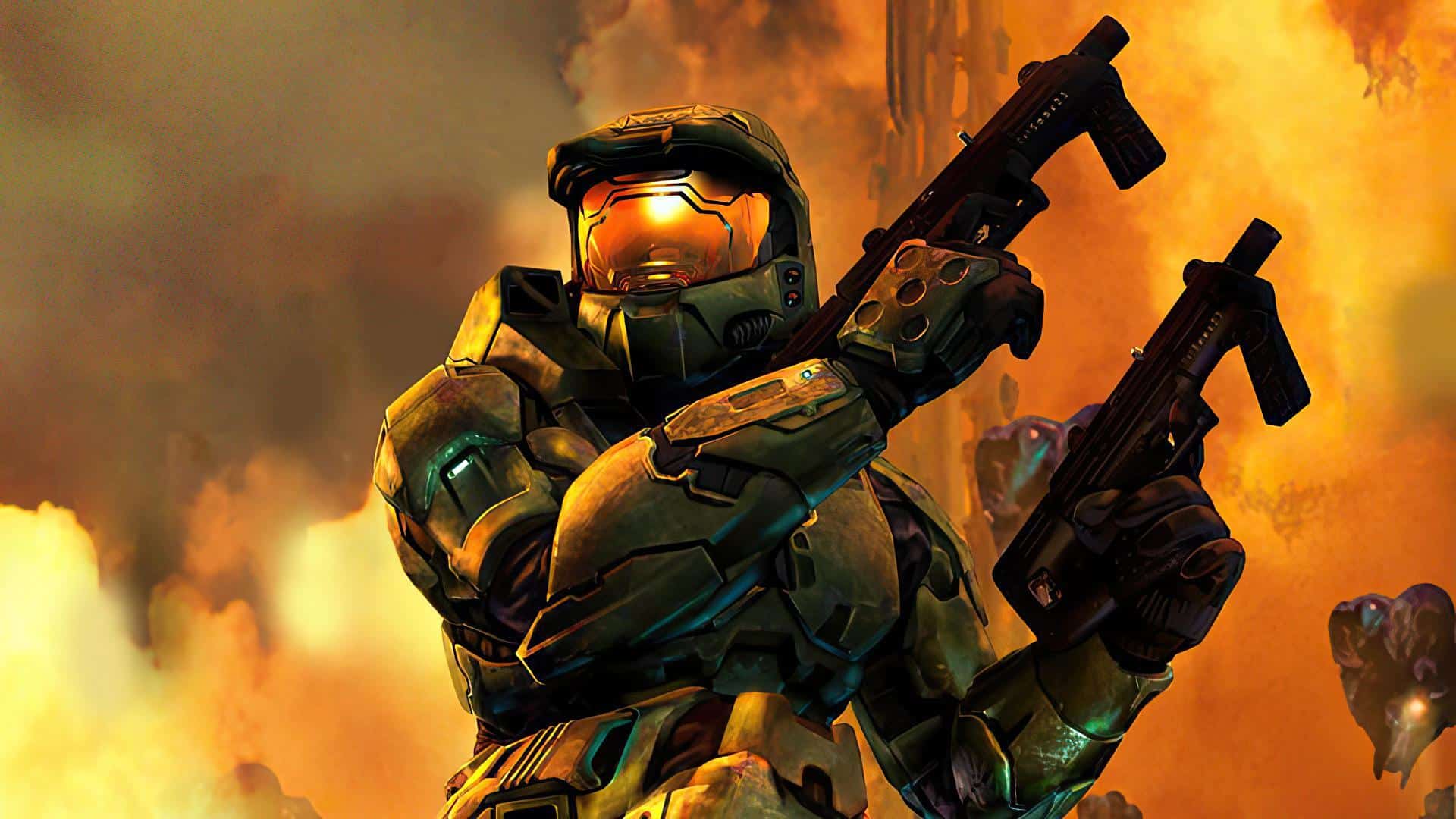You can trust VideoGamer. Our team of gaming experts spend hours testing and reviewing the latest games, to ensure you're reading the most comprehensive guide possible. Rest assured, all imagery and advice is unique and original. Check out how we test and review games here
Cynics could be forgiven for thinking that the recently announced Games for Windows initiative is simply a case of Microsoft creating a new name for PC gaming and giving it some marketing spin to coincide with the recent launch of Vista, the new PC operating system.
Thankfully though, it does genuinely seem to be a concept with far more substance than that. What Bill Gates’ giant company is trying to do with Games for Windows is a noble and admirable attempt to reinvent the PC as a diverse and accessible gaming platform that can integrate seamlessly with the Xbox 360.
At the foundation of Games for Windows is the way Vista handles games, by treating them on a par with music and movies. Games are now accessed through a ‘Games Explorer’ window, which is included for the first time on the start menu of any Vista PC. This explorer allows you to manage and access your games by using a very similar approach to the way current PCs allow you to handle you Mp3s. In practice it seems to be a simple and efficient tool, and effortlessly juggles your installed titles and the most played games in the world; games such as Solitaire and Minesweeper. The Games Explorer also includes links to game publisher and developer websites, and really seems to come close to functioning as something like an iTunes for games, albeit without a store for now.
Games for Windows is also a quality mark, and is stamped across the top of all the new PC games that make the grade. Any Vista PC will be running on Direct X9 hardware by default, meaning that if you have a Vista PC, you should be able play any game with the Games for Windows branding – although as the years go buy and requirements change, things might be a little less clear cut. This simple retail device allows you to see what games will run on your PC at a glance, and in doing so addresses the issue of compatibility, which is something that has previously deterred many console gamers who would otherwise lap up PC titles. Although graphics cards and the like will continue to exist, game and hardware compatibility issues look set to become a thing of the past.
Microsoft has also made a promise to work with developers to reduce the complexity and time that is traditionally involved in installing a game. This idea has already reached its logical conclusion with the PC version of Halo 2, which will run straight from disc within 90 seconds, with no need for installation.
Halo 2 brings us nicely to the next innovation from Games for Windows, in the form of the ‘Games for Windows – LIVE’ service, which mimics the Xbox LIVE system that has already realised the online console dream for some time. Halo 2 is the first game to run on the PC service, which offers the same achievement and Gamerscore elements as Xbox 360 games, allows free PC-to-PC multiplayer action, and free text and video chat.
Shadowrun, launching in June, will be the first game to provide cross-platform online gaming, meaning that Xbox 360 and PC gamers will be connected and able to play matches together using a single service. Furthering Microsoft’s aspirations of platform integration and core to Games for Windows is the new accessories system, which sees all 360 controllers, the wireless headset, camera and the 360 steering wheel ready to use with Vista PCs. A new range of PC-only peripherals for the hardcore gamer is also on offer to coincide with Vista’s arrival and highlight the new commitment to PC gaming.
With boxes being branded to look suspiciously like console games, controllers being used for PC play, a gaming front end as standard on Vista and a console style online service being announced, alongside promises that hardware compatibility and installation issues are moving into the past, it sounds a lot like Microsoft is re-imagining PCs as a new hybrid of console and home computer. If this becomes a reality, and consumers can reap the benefits of console style accessibility and simplicity alongside the power and performance a PC offers, Games for Windows could be the biggest revolution in power-tower bound gaming since the dawn of online multiplayer matches.
At the reigns of Games for Windows is the project’s director, Rich Wickham, who presented the details of the newest Microsoft brand at the company’s upmarket launch event in central London. Promising that it marked the beginning of a new dedication to PC gaming, Wickham assured the gathered press “with Games for Windows we’re going to continue to be committed to the PC gaming platform, and continue to support it in the long run, and we’re going to show you that now, and over the coming years“.
Rousing stuff indeed, but as is the case with any platform, it is the games that determine the success ahead. So what titles are already announced for Games for Windows and what are they like?
Frankly, based on the hands-on preview code available, they look very exciting indeed. The new Halo 2, which is only available to test in multiplayer so far, has had a fairly thorough graphical reworking, and the great game behind the visuals is still there, with an advanced level editor in place and achievements for LIVE included for the first time. But in comparison to the original Games for Windows titles on offer, Halo 2 already looks surprisingly dated.
Crysis, running on Direct X10 machines, attracted the biggest crowds of the day and, though only an early build of a small sandbox taster level was available, the FPS already showed some great promise. Visually stunning, everything from individual leaves to machine gun turrets can be destroyed in lavish detail. To allow you to take full advantage of this, your avatar’s combat suit is equipped with a power source that can be diverted to different abilities, in a system that will be familiar to Star Trek fans. For example, diverting energy away from your weapons and towards you strength increases your muscle capabilities, meaning that you can punch armoured vehicles into the air, hurl huge weights at distant foes and leap to the top of buildings in a single bound.
A more complete version of World in Conflict was also popular, offering a very detailed and accessible action-RTS set in a world where the Cold War never stopped and Russia eventually invaded American soil. Single-player was great, but multiplayer, where you can assume the role of the mighty communist war-machine and obliterate the towns and cities of the USA, seemed to generate much more enthusiasm for obvious reasons.
With Crysis, World in Conflict, Company of Heroes and other releases already establishing Direct X10 compatibility, it looks like early adopters of the new hardware will have plenty of good games to look forward to. The Games for Windows stable of software looks very promising indeed.
/https://oimg.videogamer.com/images/1015/world_in_conflict_19.jpg)
/https://oimg.videogamer.com/images/91eb/crysis_29.jpg)






